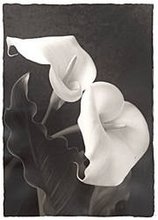
These are my titanium/PVP nanowires. Aren't they be-a-utiful?

This is a different sample, at 20x instead of 100x.

Yet another sample--did I mention that I was up to 84? At ten photos per sample, I'm only about a quarter of the way through the photographing/contact angle analysis. But the monotony does lead to some interesting data.

2 comments:
How does monotony lead to interesting data?
You should know this; it's the very nature of experimentation. I do the same thing over and over and over again--that's the monotonous part. But I do that same thing to nanowire samples created from 27 different combinations of electrospinning parameters. Thus the data I get is interesting because it tells me what affect those parameters had on the wire samples and their corresponding morphology and contact angles. --You probably didn't want to know all that...
Post a Comment